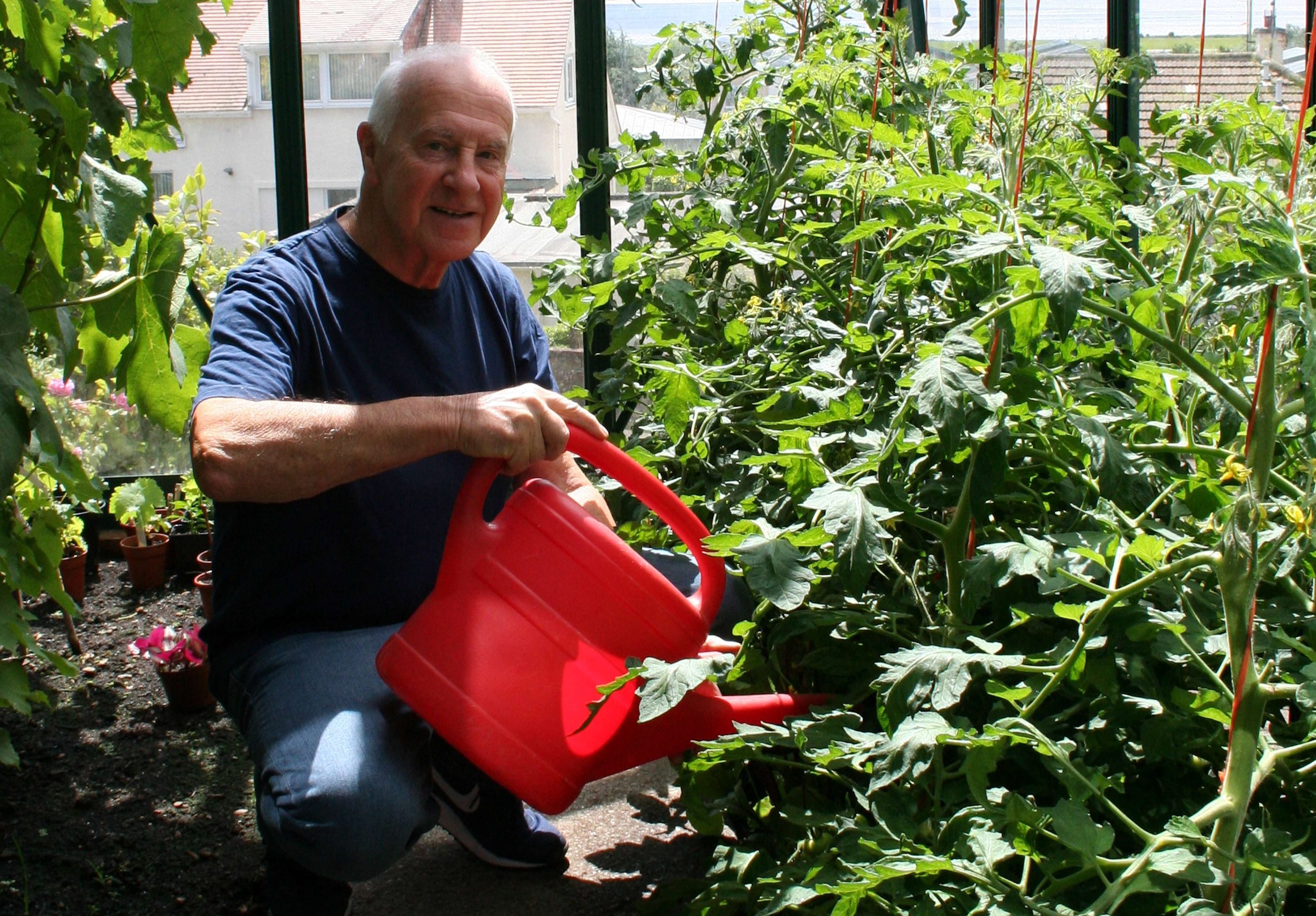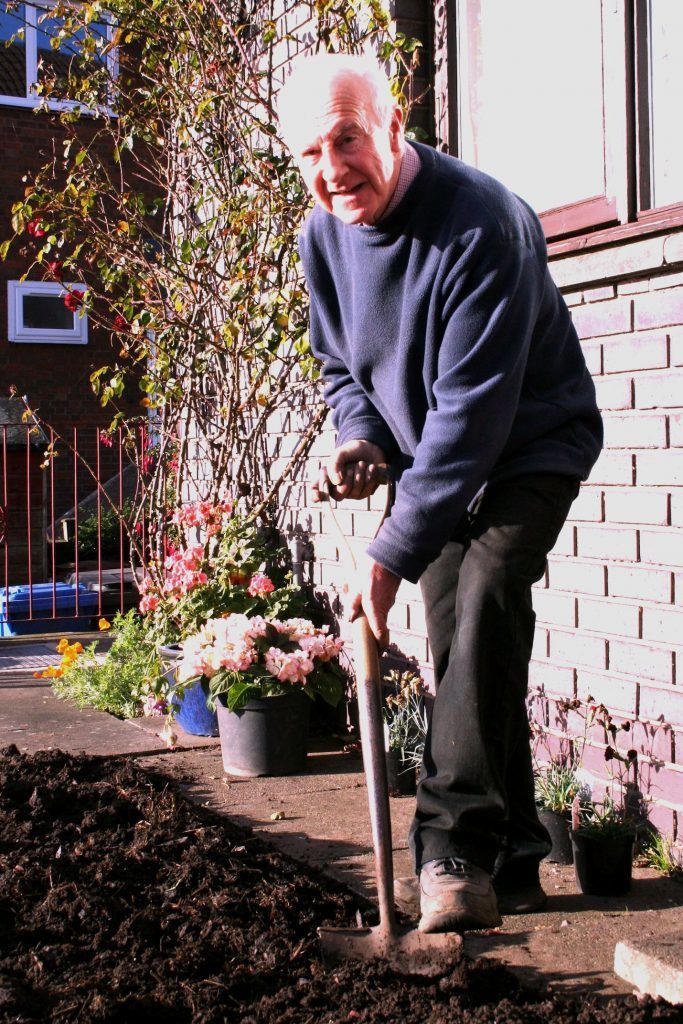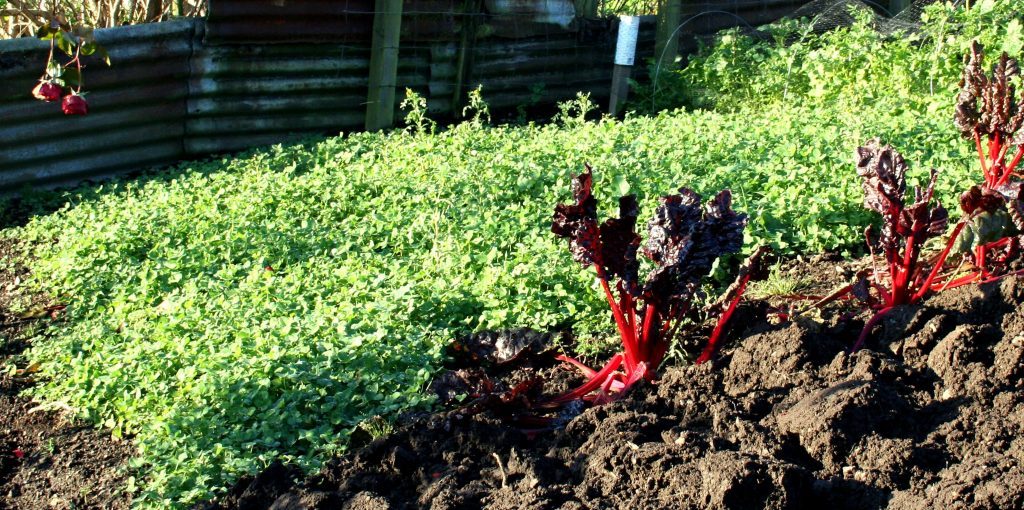Whether we grow fruit, vegetables or flowers, our success lies in the fertility of the soil in which everything grows.
Different plants all prefer soil and conditions to suit their own needs and we have to identify these needs to get the best from our garden.
The soil type varies from well drained sandy soils in maritime locations to wet clay soils inland and this is where we often start when we move into a new house.
Allotment soils can also vary according to location, but as most have a long history of cultivation, the drainage, structure and texture are usually very good. Adding organic matter such as manure, garden compost, seaweed or used grow bags opens up the structure and helps drainage.
Whenever permanent planting is envisaged, such as trees, fruit bushes, shrubs and roses it is always a good idea to double dig the area taking out a trench to assist the digging process.
Make sure soil in the bottom half of the trench stays there as you do not want any lumps of clay in the top soil. Adding organic matter during the digging helps to keep the soil structure open and assists good drainage. Organic matter also makes the soil darker and this helps to warm it up.
Always seek advice on different plant’s soil requirements. Growing annuals will give better results on poorer soils as long as the surface tilth is good for germination.
Many maritime plants prefer poorer soils otherwise they may grow lush at the expense of flowers. Some plants also like the soil to be slightly alkaline, such as border carnations, pinks and all of the brassicas on the vegetable patch. It is always easy to add lime in winter to help on acid soils.
However other plants such as heathers, azaleas, rhododendrons, camellias and blueberries require an acid soil. Adding pine leafmold, ericaceous compost and dressing with sulphur chips helps to acidify the soil as does using the sulphate fertilisers, such as sulphate of ammonia, sulphate of potash and sulphate of iron, but be careful as these can be quite strong.
Some plants such as courgettes and pumpkins like really rich soil full of organic matter and nutrients. Other gross feeders include the peas and beans, onions, sweet corn, sweet peas, dahlias and roses.
However in the vegetable patch the root crops prefer soil that had been well manured for a previous crop a year ago, otherwise if it is too rich the carrot and parsnip roots will split.
The importance of building up fertility in soils is probably more important on allotments where we grow a variety of vegetables, fruit and flowers. Our crops are always better if the soil has been well cultivated and over time plenty of organic matter has been added.
This can be horse, cow or pig manure, hen manure, (used sparingly as it is strong) or seaweed if you are near a beach and have permission to take it. Otherwise create a compost heap with everything organic that you can get hold off. This includes all garden waste, kitchen waste, shredded paper, shredded prunings from fruit and shrub bushes, rhubarb leaves, annual weeds, grass cuttings, old compost and used growbags.
To assist breakdown of the fresh compost the heap should be turned about three times each year. If you start the heap towards the end of winter it should be usable the following winter for digging in.
Green manures are another way to improve soils by growing a short term crop such as clover, ryegrass, field beans, tares or mustard, then digging it in before it starts to flower. These crops have strong fibrous roots which break up the soil and many have nitrogen fixing nodules on the roots that absorb atmospheric nitrogen, and then release it when they rot down.
Wee jobs to do this week
Cane fruits such as bramble, tayberry and loganberry can be propagated by tip layering, provided the canes are long enough to bend over to ground level without breaking. Dig out a shallow trench and lay the tip into it, then cover with soil and firm in. The tip may need a peg to keep it in place and make sure it is kept watered to encourage growth. The young plant should be ready to separate and replant by winter.












